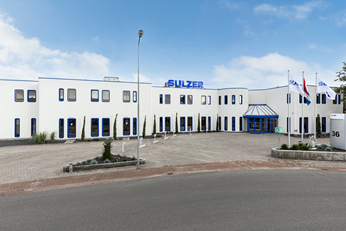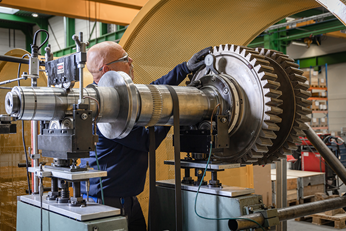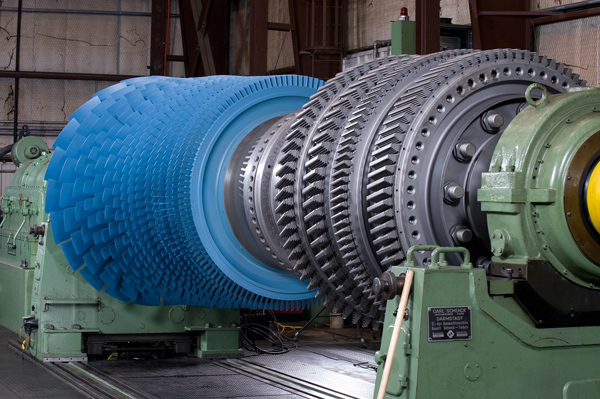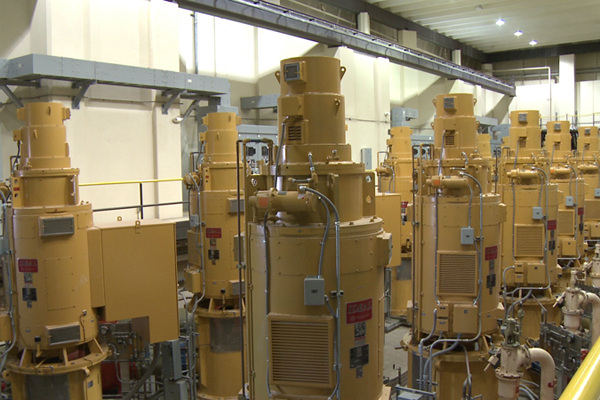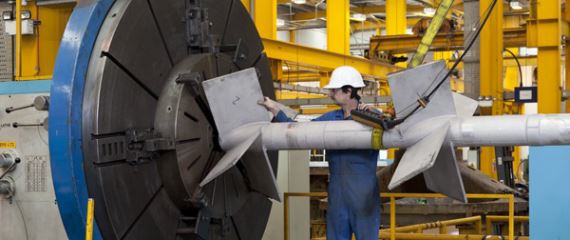Extending the service life of turbines
Adapting assets to deliver the performance needed to match the changing dynamics of the power generation landscape
Jan Jouke Melchers - Business Development Manager and Sebastian Boehme – Operations Manager for Sulzer in the Venlo Service Center, look at how gas turbines can be optimized to offer improved efficiency and extended service lives. The Venlo facility is an established competence center for heavy-duty power and utilities equipment, such as industrial gas turbines, aeroderivatives, compressors and steam turbines.
Volatility in the energy market is such that it is having a major impact on the operator’s investment structure. Previously the market was moving from baseload operations to achieving greater flexibility and efficiency, but now gas price volatility is having such an effect on performance that energy companies are reevaluating their business’ goals.
If the necessary supply chain infrastructure is in place, units that were preparing to be moth-balled due to obsolete technology may be brought back into critical service. However, these older units will most likely require attention to bring them in line with current emissions standards and their performance requirements may also need to be reviewed.
Navigating a difficult operating landscape
All gas-fired power stations are required to meet national standards for emissions; any equipment that falls outside these requirements can only operate for a restricted number of hours. With increasing demand, limited availability needs to be addressed, meaning operators with older units are now examining their supply chains to assess the viability of upgrade programs.
A large part of the existing gas turbine population has already reached a point where work is required to enable it to meet current regulations on emissions. For others, efficiency and reliability can be enhanced, but in many cases, the original equipment manufacturers (OEMs) may be unable, or unwilling, to provide such packages as extending the equipment’s “lifecycle” directly competes with their overarching strategy to install newer units.
In addition, any future plans to add hydrogen to the natural gas supply will require new technologies to be implemented in the power generating sites. Operators are faced with a number of decisions in terms of the best way to invest in their equipment and ensure they continue to meet their obligations for supplying the grid.
All of these challenges, and several more, add to the difficult operating landscape that power plants find themselves in. Moving forward, operators need to find an experienced engineering partner that can support them with cost-effective upgrade paths and enable them to keep pace with the changes. Sulzer supports the “owners” in balancing between technological advancements and a competitive cost-structure to prepare for the volatilities that the market currently provides.
Adapting maintenance for evolving operations
Historically, gas turbine plants were built to work round-the-clock providing a base-load energy supply. However, in today’s energy landscape, this model has changed, and the turbines are now acting as peak load units, or standby units, requiring them to start and stop regularly to stabilize the grid’s demands. This change in operation influences the performance of the gas turbines and therefore the reliability and availability of the plant.
Taking no action on this change in operational mode could result in unexpected downtime and if the plant is unable to maintain the required output, it could be fined for failing to meet its energy obligations. Pressure is certainly increasing and there is an opportunity for operators to resolve several challenges at the same time.
A number of changes to the maintenance routines and the design of the turbine itself should be considered in these situations, otherwise the operation of the turbine may be compromised. The issue for the operator comes when the OEM only offers a minimal range of rigid solutions that may exceed the investment available at the time; at this point an independent maintenance provider is required, one with sufficient experience, knowledge and facilities to deliver the improvements effectively.
Consider the individual and their surroundings
Each turbine should be assessed individually, taking into account its history as well as its current and future operational requirements. In some cases, the surroundings of the plant may have changed since the turbines were commissioned and a revamp project could include modifications that improve efficiency and reduce emissions.
It is important to consider the infrastructure surrounding the power plant. For example, a generating site that is located close to a neighboring industry with a thermal demand or an area with district heating can be set up to gain maximum benefit from residual heat energy.
Similarly, a site located in an area that has an abundance of wind turbine generators may only be required to support the local grid during periods of low wind speeds and therefore less power to the grid. Such an operating model will differ considerably from a plant that is designed to deliver base-load power.
Pushing beyond the OEM upgrade limit
To reach the expected design life of a turbine, OEMs work to the theoretical lifetime of the components and will usually only repair parts once. They must take a worse-case scenario and ensure their machine will remain reliable using the suggested maintenance intervals. However, this does not benefit every operator.
Sulzer works with the actual condition of the turbine and its current performance criteria, carefully assessing each component and deriving the actual lifetime of the turbine. This can be extended considerably beyond the OEM figures because the number of repairs can be increased while remaining well within the safety limits for the machine. Lifetime extensions can be achieved through a number of modifications, for example the application of specialized coatings that can extend maintenance periods.
Clever, competent and cost-effective repairs
The whole process starts with the initial conversations that cover the history of machine and what is expected of the turbine going forward. If the peak output can be reduced, the expected service life can be extended considerably, but this is not always an option. By talking through a number of options for modifications or upgrades, Sulzer supports owners in deciding upon the technological advancements within the optimized cost-structure for operations and maintenance.
Of course, the process is not as easy as just selecting any independent service provider (ISP). For a start, in cases where the gas turbine is insured, the insurance company will require assurance about the competency and expertise of the ISP. Any work carried out must be done to the highest standards and using the correct materials and procedures.
Sulzer as an ISP is able to support and train customers on operational and maintenance concepts to enhance the performance of the turbine and the abilities of those responsible for keeping it running. This empowers the operator, improving their skill levels to a point where they can carry out preliminary, minor inspections and Sulzer can offer advice based on the information provided by the operator.
Improve the legacy of your equipment
As a rotating equipment specialist, Sulzer has the expertise and facilities to work on the complete powertrain. From the gas and steam turbines to the generators as well as the pumps and compressors that feed the boilers and other industrial processes, Sulzer can offer support for the whole package.
As the OEMs develop the latest technology for new turbines, focus on the legacy equipment becomes less and less. For an ISP, taking on this challenge to work on legacy turbines requires considerable knowledge and expertise, but the benefits for the operator can be clearly defined.
Volatility in the energy market continues to pose significant challenges for turbine operators, so they will need to change how their plants operate. The sooner action can be taken to improve performance, the quicker owners will see the benefits in terms of optimized output and extended service life.

